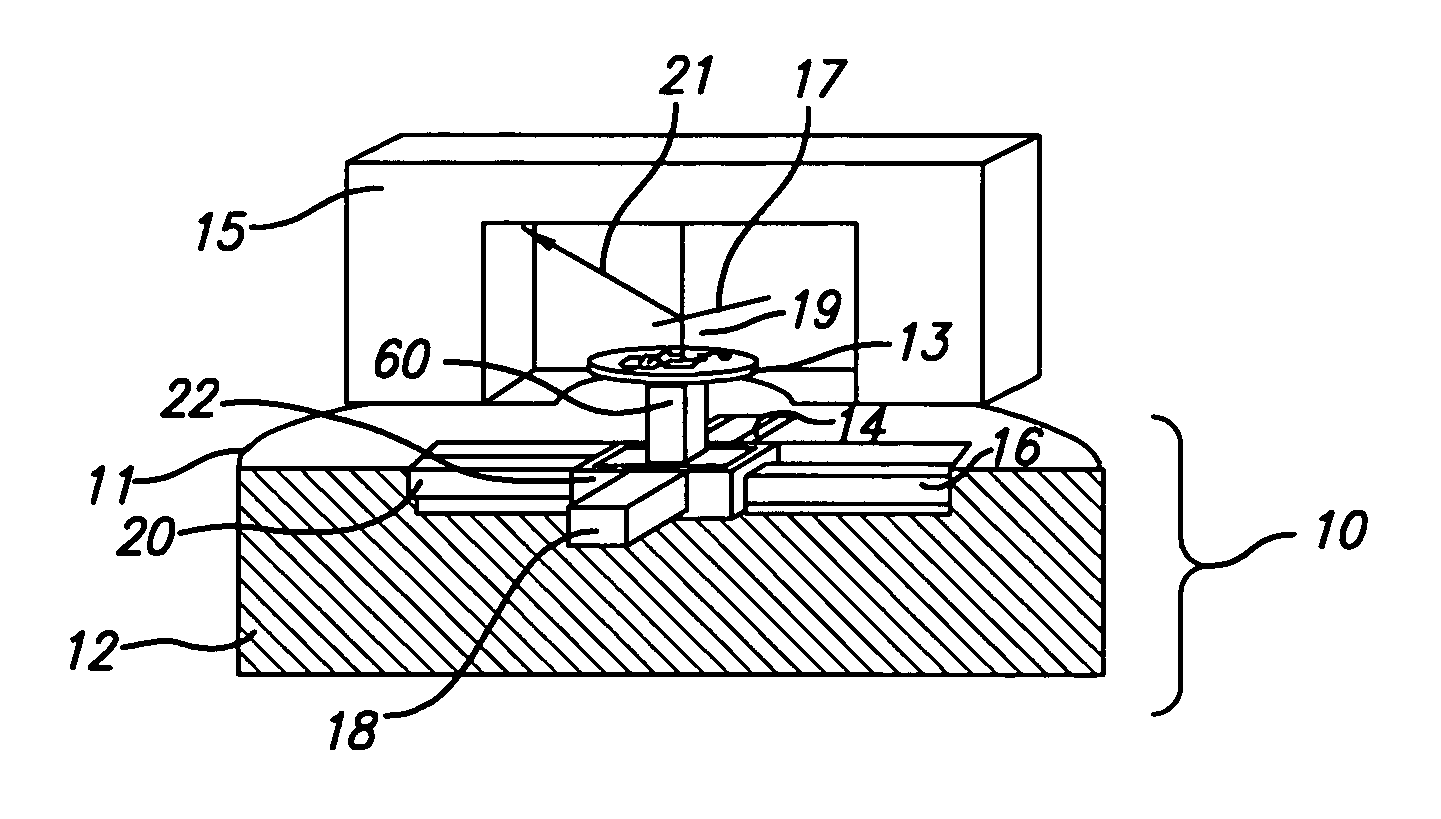Scanner for probe microscopy
- Summary
- Abstract
- Description
- Claims
- Application Information
AI Technical Summary
Benefits of technology
Problems solved by technology
Method used
Image
Examples
Embodiment Construction
[0042]FIG. 1 schematically depicts generalized components of the scanner 10 for use in a scanning probe microscope of the invention. The scanner 10 includes a housing 12, at least two actuators 14 and 16 (possibly together with respective opposing actuators 18 and 20), each coupled to the housing 12, respectively at 24 and 26, and a support 22. The support 22 is also coupled to the housing (not shown in FIG. 1) and to at least one of the actuators at a position, e.g., at 28, spaced from the point 24 at which the actuator is coupled to the housing 12. The support 22 and its connections to actuators 14, 16, 18, and 20 are such that the support 22 constrains motion of each actuator along its axis while permitting translation normal to the axis. Strain gauge sensors 30, 32, 34, and 36 are applied to respective actuators 14, 16, 18, and 20 to enable measurement of expansion or contraction of the actuators.
[0043] Referring to FIG. 2, generalized components of a scanning probe microscope ...
PUM
 Login to View More
Login to View More Abstract
Description
Claims
Application Information
 Login to View More
Login to View More - R&D
- Intellectual Property
- Life Sciences
- Materials
- Tech Scout
- Unparalleled Data Quality
- Higher Quality Content
- 60% Fewer Hallucinations
Browse by: Latest US Patents, China's latest patents, Technical Efficacy Thesaurus, Application Domain, Technology Topic, Popular Technical Reports.
© 2025 PatSnap. All rights reserved.Legal|Privacy policy|Modern Slavery Act Transparency Statement|Sitemap|About US| Contact US: help@patsnap.com



